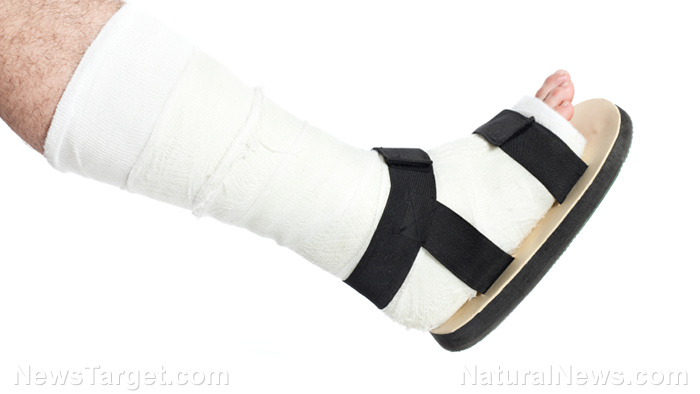
If you were to break your leg by accident, you could quickly call for medical assistance to fix your leg right back up, but when SHTF, treating injuries can suddenly become a lot more complicated. A prepper should always be ready for the worst case scenario, even when it involves providing first aid to broken bones out in the wilderness. Here is a quick guide all preppers can learn from on how to treat broken bones, fractures and muscle-strained ligaments. (h/t to MyFamilySurvivalPlan.com.)
Assessing the situation
Once a person has been injured, before anything, you will first want to ensure that the injured person is safely out of harm's way. Check that person's vitals to make sure they are in a stable condition. Next, you will want to find out what kind of injury the person has. Common symptoms of broken bones include the inability to use the affected body part, severe pain, inflammation, deformity, and discoloration of the skin. Sprains and strains have similar symptoms to those of broken bones or fractures but are often less severe. The legs, ankles, and wrists are areas prone to fractures, whereas the shoulder often experiences dislocation. Popping a dislocation back into place is highly discouraged. Common symptoms include pain and restricted range of movement.
Fractures should be handled very carefully and with minimal and gentle manipulation. The best way to treat broken bones is with splinting. Once the broken bones have been set, the splints are used to support and immobilize the affected area. (Related: Medical Preparedness: How to treat minor injuries in the field.)
Broken legs
First, you will want to find two strong, forked branches with a diameter of at least two inches each. The first branch should be as long as the distance from the injured person's armpit to 12 inches past their broken leg. The second branch should be as long as the distance from the person's groin until 12 inches past their injured leg. Pad these splints with a cloth or soft material. Find a third branch that also has a diameter of two inches and place this in the area between the ends of the first two branches that go 12 inches past the leg. This will form two splints, one on each side of the broken leg. Tie these splints together with rope, cloth or any kind of cordage. Tie a wrap around the person's ankle with the free ends being tied to the cross member. Lastly, find a twisting stick to place around the free end of the ankle wrap to provide traction. Twist it until the broken leg is aligned with the healthy leg.
Broken arms
Gently adjust the arm into its natural and anatomically correct position. Find a strong and rigid material such as cardboard, sticks or wood and make sure it is long enough to extend past the length of injured person's wrist to their elbow. The splints should be equal in length. Wrap the injured arm in a soft and clean cloth to keep the broken arm comfortable. Apply the splints on the arm. If it is the forearm that is broken, the splints should extend past the wrist. If it is the upper arm that is fractured, the splints should go past the elbow. Wrap the splints with a cloth that extends five inches before and after the fracture. Tie the cloth snugly but not too firmly. Leave just enough space to allow two fingers to slip in. To secure the arm in place, tie another piece of cloth around the person's neck and slip the fractured arm in it, splints and all. Keep the hand in a flat and horizontal position and let it remain centered on the sling. Lastly, ensure that the elbow is at a 90-degree angle.
Joint injuries
Ligaments are tissues that connect two or more bones at a joint, while tendons are tissues that connect muscles to bone. Strains involve the muscles or tendons, while sprains involve the ligaments, frequently the ones in the ankles and knees. Such joint injuries happen when the tendons or ligaments become stretched or torn. Fortunately, they are not as severe as broken bones or fractures, but they still do come with uncomfortable symptoms such as pain, inflammation, and restricted range of motion.
You can treat these injuries by helping reduce the swelling. To do this, you must first lower the temperature of the affected area. Let the injury soak in cold water, such as in a river or lake. If there is snow in your environment, create a makeshift ice pack by wrapping it in cloth and applying it to the affected area. Next, wrap the affected area in an elastic bandage. Keep it snug so that it doesn't impair circulation. Gently massage and stretch the injury. Lastly, keep the affected limb or leg elevated above the heart. If the injury is mild, 20 minutes should suffice. If it is a serious case, let it remain elevated overnight. The injury should heal on its own with plenty of rest.
If you want to learn more on how to survive when SHTF, you can read more articles by going to Survival.news.
Sources include:
Please contact us for more information.














